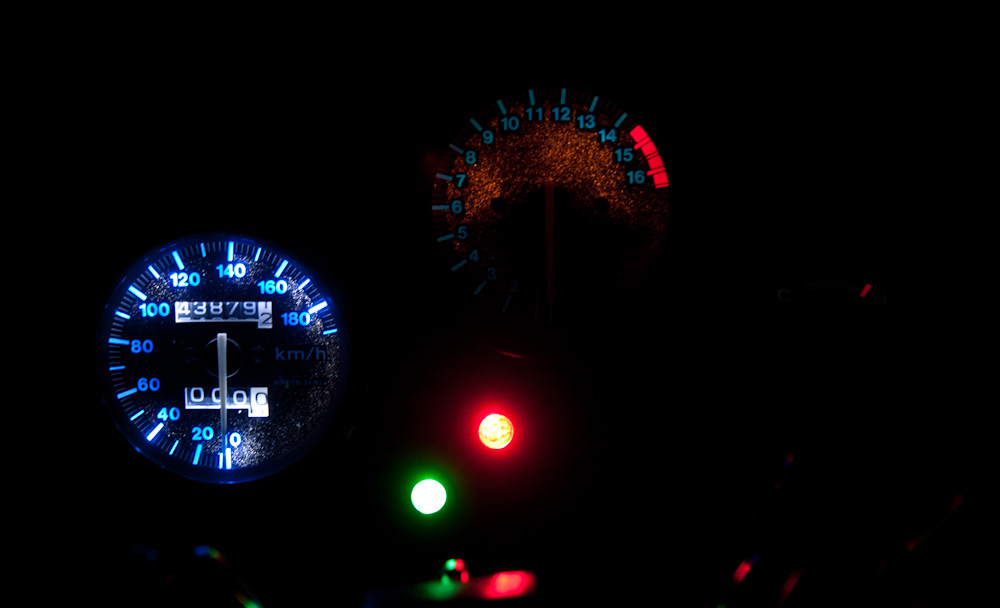I had the fairing off the NC23 for wiring up the high-beam solenoid on the left headlight (when I retrofitted the headlights I only hooked up the right one to the high beam circuit, because I only had one connector) and I decided to investigate the extremely poor lighting on the instrument cluster. The speedometer on my NC23 is so poorly illuminated that it’s difficult to tell how fast you’re going when it’s dark. Clearly not desirable.
The bulbs were OK, so that wasn’t the problem. I guess the light provided by the 2 tiny bulbs just doesn’t have enough oomph to do it. I wonder if it used to be better. In any case, I figured an array of white LEDs around the perimeter of the gauge would do better.
After a bit of fiddling around I had manufactured a little ring of 9 deadbug-soldered LEDs that I mounted to the bottom of the speedo box with RTV. To get the power in there I cracked one of the bulbs and soldered the leads to the LEDs to the pins that used to hold the filament and encased it all in RTV. It aint pretty, but it works.
The result is pretty good. Unfortunately, I didn’t take any pictures of what it looked like before I started, but here it is:

The NC23 gauge cluster. The speedo, on the left, was about as well illuminated as the tach is currently. And in case you can’t tell, there’s a temperature gauge to the right… It looks like the bottom bulb on the tach might be burned out, too.
For comparison, this is the NC30 gauge cluster, with identical exposure settings:

The NC30 gauge cluster. The illumination is better than the NC23 one, but the temp gauge on the right is practically invisible here, too.
I think it turned out pretty well. The LEDs are much more collimated than the bulbs, so the lighting is a bit uneven, but I should be able to see how fast I’m going without a problem now.
But seriously, what’s up with the temp gauges? There is a light there, but in the pictures it’s practically invisible. It’s easier to see in person, but only barely.
Interestingly, the NC23 numbers are blue. Of course, the LEDs are much more white compared to the bulbs, which are very reddish, but the meter overlays have the numbers in blue. Of course, putting a blue filter in front of a very red bulb doesn’t exactly help with brightness. Look at the difference in brightness between the blue numbers and the red redline on the tach. Not the best design decision Honda ever made.